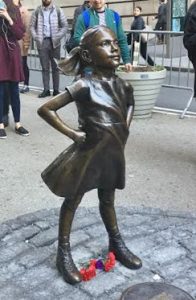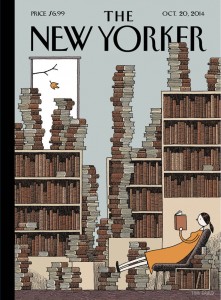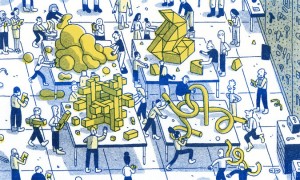 In response to me reaching out to some people about suggestions for courses that I might teach, I received an e-mail with an interesting course idea: “There’s a class here called ‘Yale and America’, so I was thinking you could do something like Yale and Entrepreneurship. That way, you’d be able to go into all the research you’ve done over the last few years. I attached ‘Yale and America’s’ syllabus in case you want to take a look at it.” Indeed I did take a look at the “Yale and America” syllabus. Professor Gitlin, History Department, writes in the course description: “Although the time span of the course is rather long, the focus is consistent: to study the impact of Yale on American thought and culture and vice versa-that is, the ways in which events and social, intellectual, and cultural currents have influenced the university and the work of its graduates. We will also look at the image of Yale in American popular culture.” After reading Professor Gitlin’s course description it became apparent to me that a course focused on Yale and Entrepreneurship warranted further investigation. I intend to develop a course that focuses on the impact of Yale on American innovation and entrepreneurship.
In response to me reaching out to some people about suggestions for courses that I might teach, I received an e-mail with an interesting course idea: “There’s a class here called ‘Yale and America’, so I was thinking you could do something like Yale and Entrepreneurship. That way, you’d be able to go into all the research you’ve done over the last few years. I attached ‘Yale and America’s’ syllabus in case you want to take a look at it.” Indeed I did take a look at the “Yale and America” syllabus. Professor Gitlin, History Department, writes in the course description: “Although the time span of the course is rather long, the focus is consistent: to study the impact of Yale on American thought and culture and vice versa-that is, the ways in which events and social, intellectual, and cultural currents have influenced the university and the work of its graduates. We will also look at the image of Yale in American popular culture.” After reading Professor Gitlin’s course description it became apparent to me that a course focused on Yale and Entrepreneurship warranted further investigation. I intend to develop a course that focuses on the impact of Yale on American innovation and entrepreneurship.
Entrepreneurship and a new culture of learning that centers around self-directed learning is fundamental to the internal and external perception of Yale. That perception will not displace Yale’s image as an icon of liberal education. But it will embellish the university’s attractiveness to prospective students, faculty, and donors. This assertion raises the specter to the looming debate about the role of humanities in education, and whether humanities are being marginalized because of the ascendancy of STEM disciplines (science, technology, engineering and math) and closely related entrepreneurial activities. My interpretation, as an ethnographer, of the discussion about the role of humanities in a 21st century education, is that this discussion is a proxy for a broader debate about the meaning and consequence of modernizing elite universities. Concerns about modernizing an iconic 313-year-old institution while heartfelt and sincere, are antithetical to why institutions such as Yale have thrived for as long as they have.
My research and development of the theory of the wide toolbox offer a less obvious proposition: a cohort of students are preserving the humanities, the arts and social sciences by incorporating these disciplines into their self-directed learning process. They recognize the value of a humanist approach to designing solutions to engineering, social or business related problems. This cohort is attempting to fully utilize the plethora of resources that make Yale the world-class institution that it is. In The Innovators: How a Group of Hackers, Geniuses, and Geeks Created the Digital Revolution, author Walter Isaacson, offers the observation that he was “struck by how the truest creativity of the digital age came from those who were able to connect the arts and sciences. They believed that beauty mattered.” He continues, “The people who were comfortable at this humanities-technology intersection helped to create the human-machine symbiosis that is the core of this story.”
For Yale and Harvard, and their peers, the paradox is how to preserve what has made these institutions great, their liberal tradition, while periodically adapting their institutional ethos to maintain their vibrancy and contemporary relevance. Two former presidents of Yale highlight this point. “The university is essentially a living thing. Like other organisms it must grow by casting off that which is no longer of value and by taking on that which is …. Meantime, it will always be true that where the greatest investigators and scholars are gathered, thither will come the intellectual elite from all the world.” President James Rowland Angell, Inaugural Address, 1921.
In a contemporary version of President Angell’s view of the essential nature of Yale, President Levin, in discussion about Yale’s fourth century, wrote:
Indeed, we will continue the transformation of Yale, begun in the eighteenth century, from a local to a regional to a national and now to a truly international institution-international in the composition of its faculty and student body, as well as in the objects of its study.
We have thought hard about how to marshal the means to realize our aspirations, and I believe we have the financial and organizational capacity to succeed. But we need also to be flexible and adaptive. We are engaged in the generation of new knowledge, and this core activity will inevitably produce new opportunities for as yet unimagined innovations in education and research. Thus, we can have no rigid long-term plan. Instead, there must be a broad consensus on values, a shared sense of direction, and a perpetual willingness to revise yesterday’s plans on the basis of new knowledge. [Levin 2003:172-173]
An intriguing question for students, faculty, administrators, alumni, and friends of the Yale community is: How would you design the modern Yale?
 In the first iteration of this blog, I wrote several posts focused on the American Dream. One of my favorites was titled The American Dream: Myth, Metaphor and Reality.
In the first iteration of this blog, I wrote several posts focused on the American Dream. One of my favorites was titled The American Dream: Myth, Metaphor and Reality.






